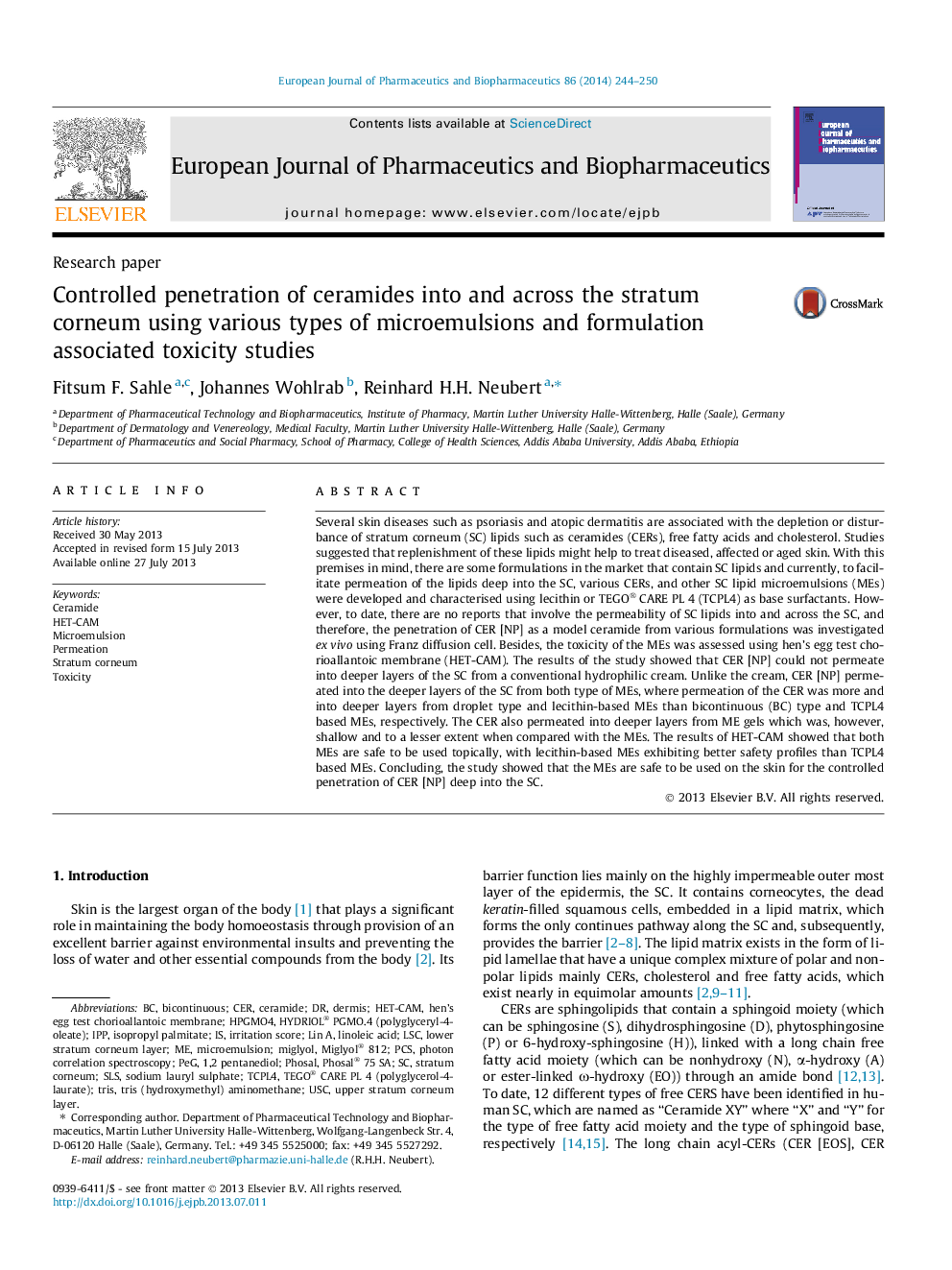| کد مقاله | کد نشریه | سال انتشار | مقاله انگلیسی | نسخه تمام متن |
|---|---|---|---|---|
| 8414132 | 1545344 | 2014 | 7 صفحه PDF | دانلود رایگان |
عنوان انگلیسی مقاله ISI
Controlled penetration of ceramides into and across the stratum corneum using various types of microemulsions and formulation associated toxicity studies
دانلود مقاله + سفارش ترجمه
دانلود مقاله ISI انگلیسی
رایگان برای ایرانیان
کلمات کلیدی
LSCTRISUSCSLSIPPHET-CAM - HET CAMLinoleic acid - اسید لینولئیکIsopropyl palmitate - ایزوپروپیل پالمیتاتBicontinuous - بی نهایتPermeation - ترواش یا رسوخtris (hydroxymethyl) aminomethane - تریس (هیدروکسی متیل) آمینومتانDermis - درمیPCs - رایانه های شخصیsodium lauryl sulphate - سدیم لوریل سولفاتCer - سرceramide - سرامیدToxicity - سمی بودنphoton correlation spectroscopy - طیف سنجی همبستگی فوتونStratum corneum - لایه شاخی، استراتوم کورنئومMicroemulsion - میکرو امولسیونirritation score - نمره تحریکPEG - پلیاتیلن گلیکول
موضوعات مرتبط
علوم زیستی و بیوفناوری
بیوشیمی، ژنتیک و زیست شناسی مولکولی
بیوتکنولوژی یا زیستفناوری
پیش نمایش صفحه اول مقاله

چکیده انگلیسی
Several skin diseases such as psoriasis and atopic dermatitis are associated with the depletion or disturbance of stratum corneum (SC) lipids such as ceramides (CERs), free fatty acids and cholesterol. Studies suggested that replenishment of these lipids might help to treat diseased, affected or aged skin. With this premises in mind, there are some formulations in the market that contain SC lipids and currently, to facilitate permeation of the lipids deep into the SC, various CERs, and other SC lipid microemulsions (MEs) were developed and characterised using lecithin or TEGO® CARE PL 4 (TCPL4) as base surfactants. However, to date, there are no reports that involve the permeability of SC lipids into and across the SC, and therefore, the penetration of CER [NP] as a model ceramide from various formulations was investigated ex vivo using Franz diffusion cell. Besides, the toxicity of the MEs was assessed using hen's egg test chorioallantoic membrane (HET-CAM). The results of the study showed that CER [NP] could not permeate into deeper layers of the SC from a conventional hydrophilic cream. Unlike the cream, CER [NP] permeated into the deeper layers of the SC from both type of MEs, where permeation of the CER was more and into deeper layers from droplet type and lecithin-based MEs than bicontinuous (BC) type and TCPL4 based MEs, respectively. The CER also permeated into deeper layers from ME gels which was, however, shallow and to a lesser extent when compared with the MEs. The results of HET-CAM showed that both MEs are safe to be used topically, with lecithin-based MEs exhibiting better safety profiles than TCPL4 based MEs. Concluding, the study showed that the MEs are safe to be used on the skin for the controlled penetration of CER [NP] deep into the SC.
ناشر
Database: Elsevier - ScienceDirect (ساینس دایرکت)
Journal: European Journal of Pharmaceutics and Biopharmaceutics - Volume 86, Issue 2, February 2014, Pages 244-250
Journal: European Journal of Pharmaceutics and Biopharmaceutics - Volume 86, Issue 2, February 2014, Pages 244-250
نویسندگان
Fitsum F. Sahle, Johannes Wohlrab, Reinhard H.H. Neubert,